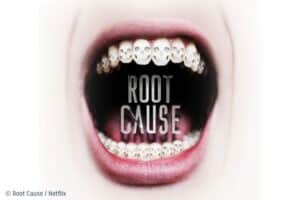There has been a lot of interest in the article I posted in December about the young child with behaviour issues who was eventually identified as having a breathing problem. I want to expand on that article a little bit in this edition of the EDC blog.
Airway prosthodontics is an emerging area of dentistry. It focuses on the airway and the effect it has on the stomatognathic system, or all of the parts of the head and neck. It also focuses on the effect the anatomy has on breathing. First things first: NASAL BREATHING IS THE GOLD STANDARD FOR HEALTH. It doesn’t matter if you are 2 years old or 82 years old. If you don’t breathe through your nose, the potential exists for significant global health problems.
Sleep-disordered breathing (SDB) encompasses a spectrum of dysfunctional sleep breathing, including occasional snoring, habitual snoring, upper airway resistance syndrome (UARS), sleep apnea, and hypoventilation. The medical community has traditionally focused on obstructive sleep apnea (OSA) and obesity hypoventilation syndrome. Unfortunately, many sleep-related disorders, especially those predominantly found in women and children, have been ignored because of the focus on OSA.
Just like the mother who wrote the article, I shared with you, many of you have become frustrated with a lack of answers for your own problems or those of a loved one. The bottom line is that if you don’t sleep well physiologically, things can go wrong.
Many of the things that can go wrong are not traditionally thought to be caused by airway issues, such as:
- Frequent arousals during sleep
- Non-refreshed sleep
- Restless sleep
- Morning headaches
- Nausea
- Personality changes such as becoming irritable or temperamental
- Severe anxiety or depression
- Poor job performance
- Clouded memory
- Intellectual deterioration
- Occupational accidents
- Impotence
- Decreased sex drive
- Bruxing
- Dry mouth when you awaken
- Scratchy throat
Children
- Hyperactivity
- Poor concentration
- Developmental delay
- Hyponasal quality to their voice
- Noisy breathers
- Obesity
- Frequent upper airway infections
- Earaches
- Bedwetting
- Nocturnal mouth breathing
- Snoring
- Restless sleep
- Nightmares
- Night terrors
- Headaches
- Chronic nose running
We really want to identify 3 groups of patients:
Young children- if we can get to them before growth and development has taken place, we can prevent all of the negative health effects that may occur throughout life.
Young and Fit- typically age 20-45 and more commonly, women. These people are not the “old fat men” of the apnea stereotype.
They don’t sleep well, may have anxiety issues, depression, TMJ issues, etc. We want to identify the airway issue if there is one and treat it to help resolve their health problems. The medical community is often ignoring these patients and treating them for their symptoms and not the disease.
Old Overweight Men- these are the patients with sleep apnea. They are usually diagnosed through sleep studies, and given a CPAP machine and told to lose weight. The CPAP may save their life, and losing weight is not a bad thing, but there is often more going on here. Treatment for these patients is often more complicated and involved, but it is possible to resolve their issues.
In my practice, we use the Seattle Protocol for identifying the level of treatment an adult requires to resolve their airway issues. This protocol was developed by Dr. Jeff Rouse of the Spear Institute in Scottsdale. Dr. Rouse has been my mentor on my journey through Airway Prosthodontics. It is a six-step protocol for determining the treatment level patients need. The sixth step is essentially what dentistry is currently doing for sleep apnea patients, that is, using a mandibular advancement appliance. However, not all patients fit the same medical model.
Some may just require nasal dilators and nasal dilating exercises, and some may fall in between.




